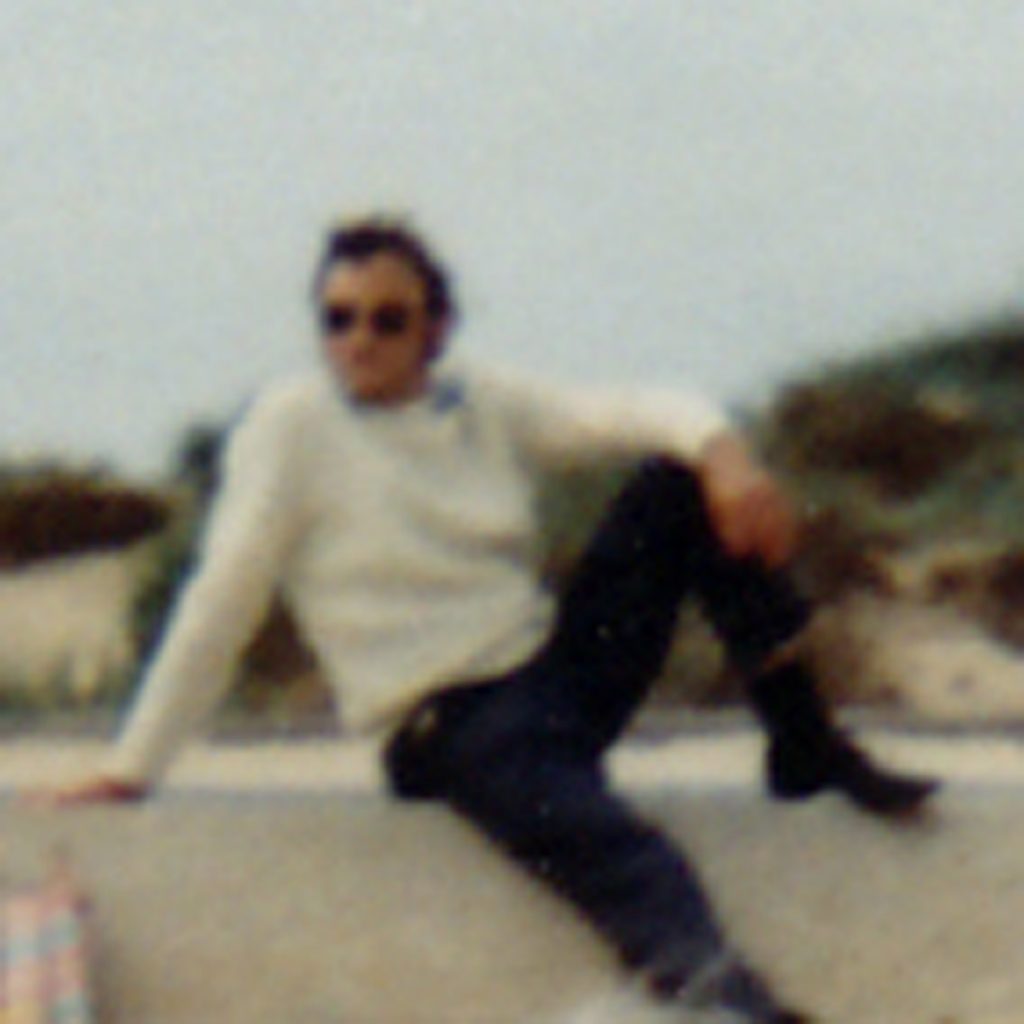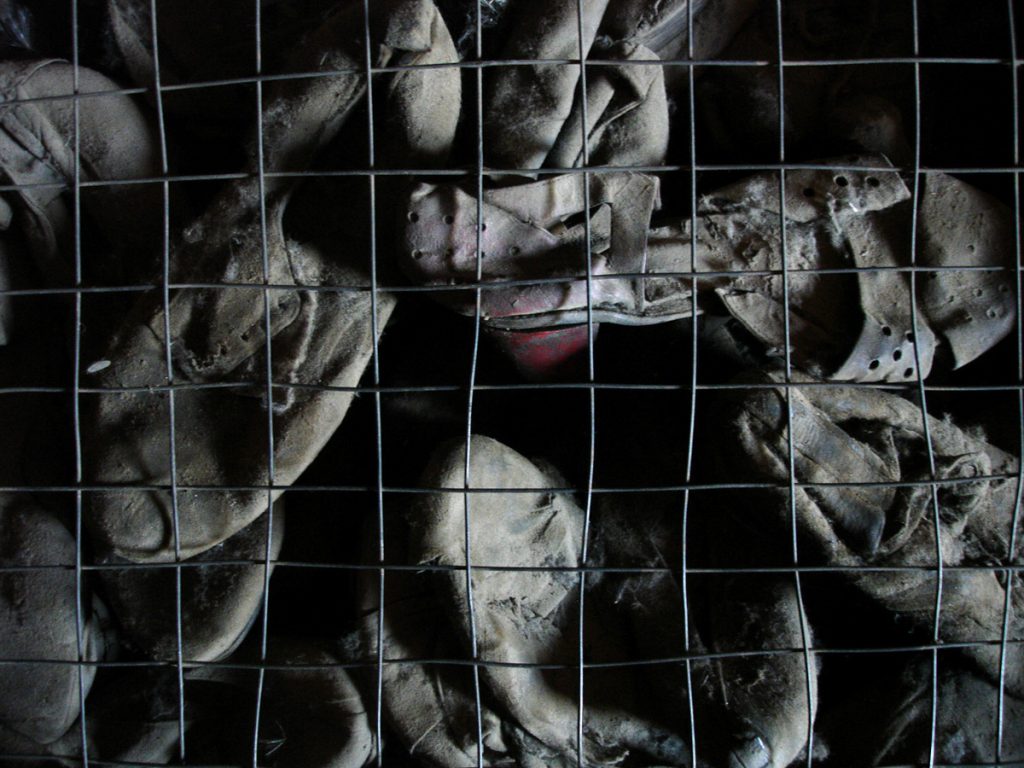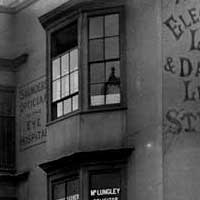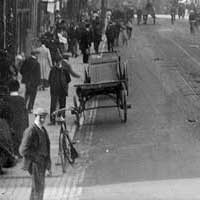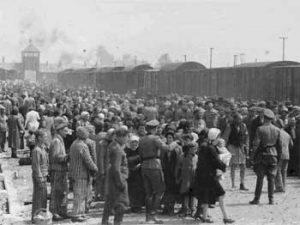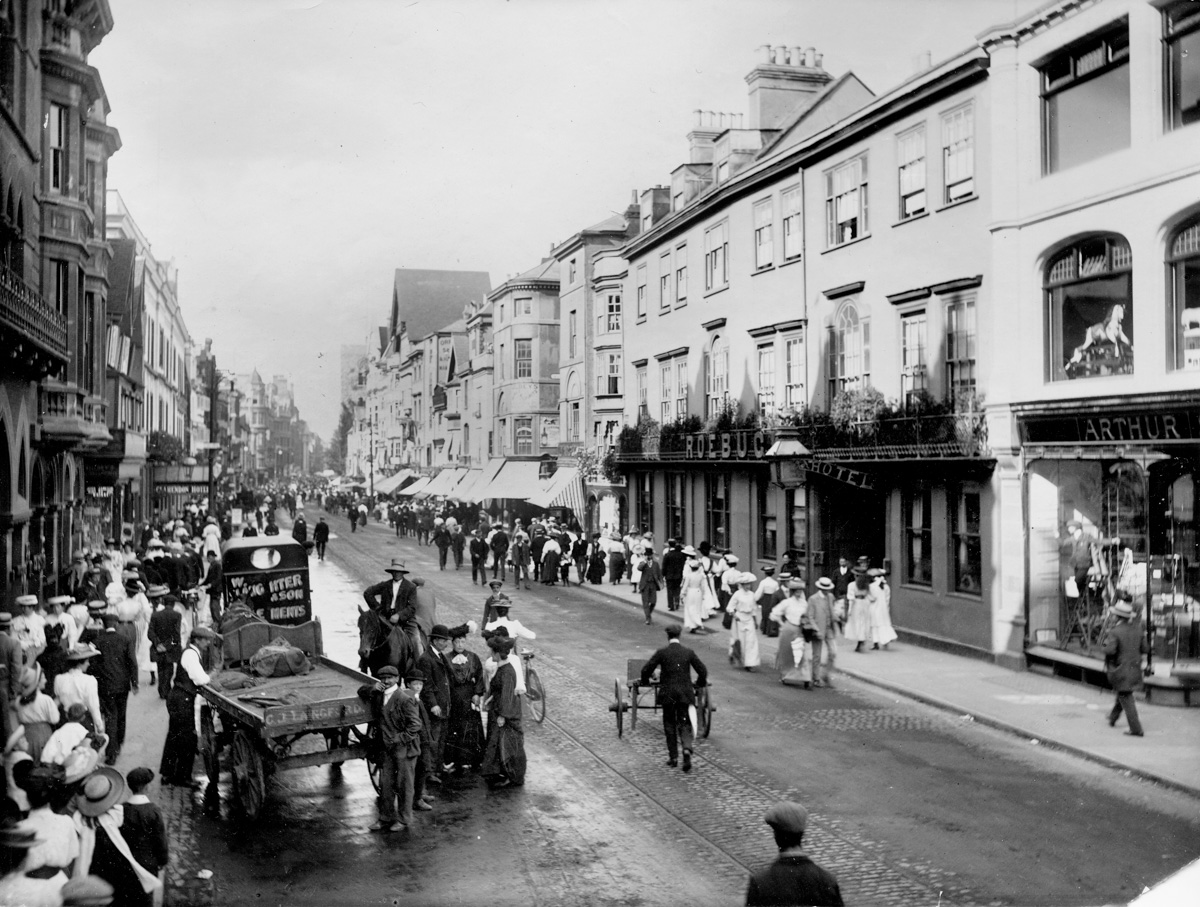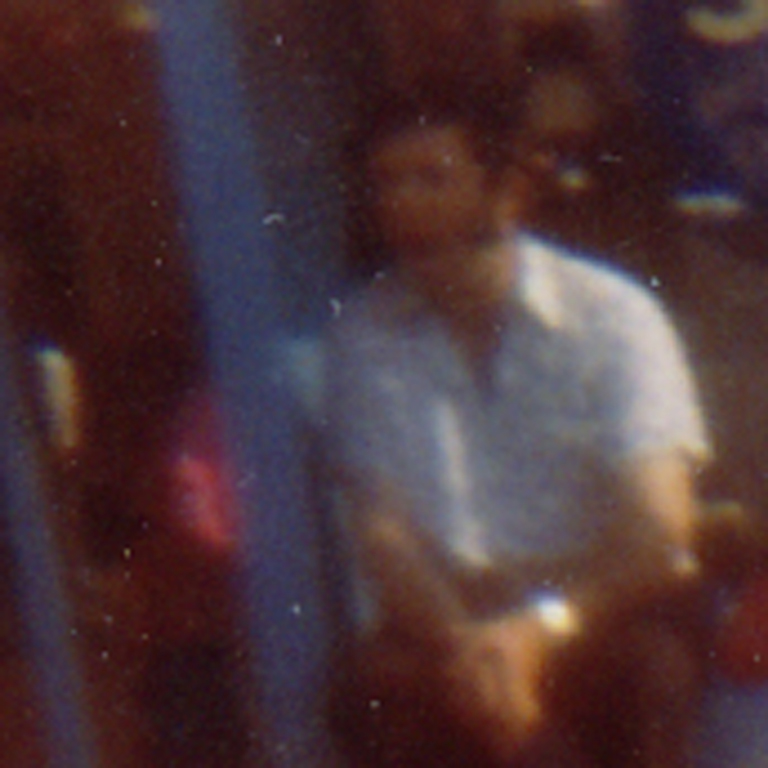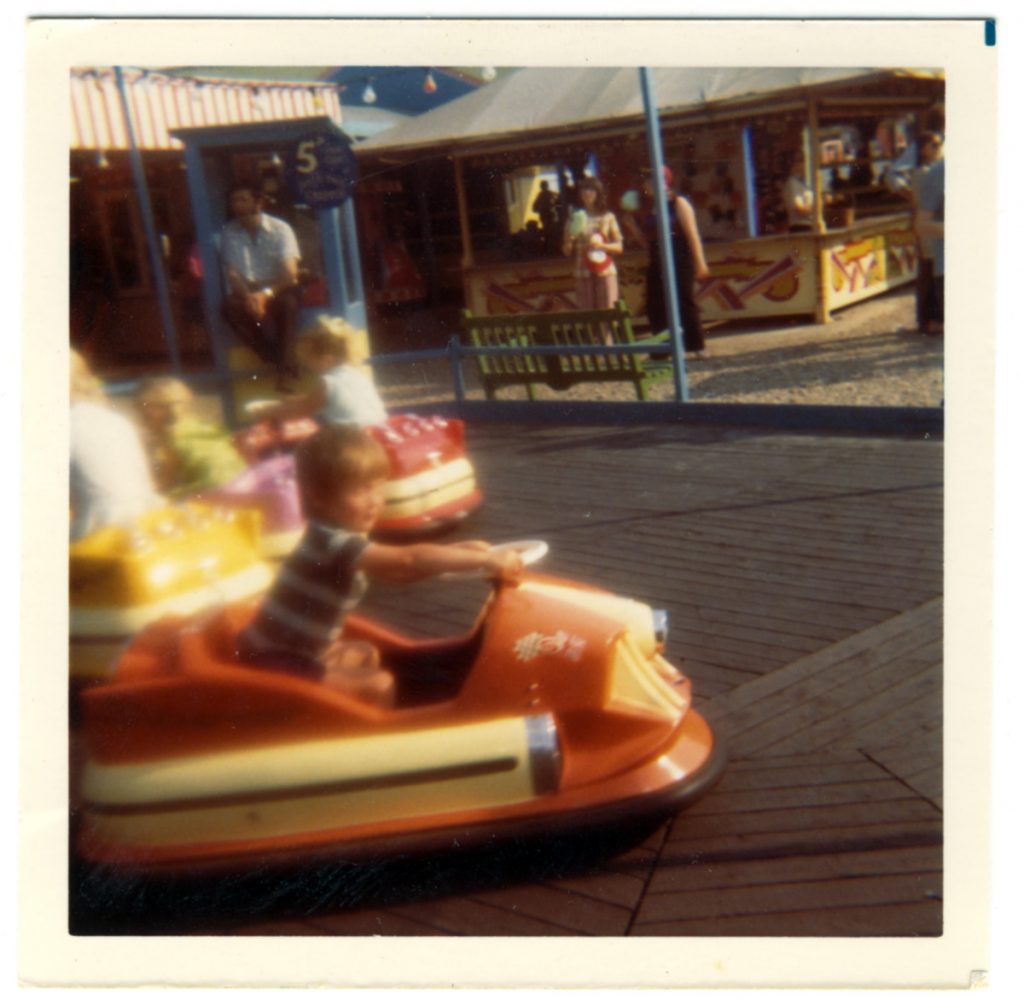Like much of my work over the past year, this project has developed through my ongoing work on the Holocaust and sites of historical trauma, including Auschwitz, Belzec and the battlefields of Ypres. Much of that work has been focussed on how we, in the present day, can ‘find’ individuals amongst the overwhelming mass of nameless victims of the Holocaust, of wars and other historic catastrophes, both man-made and natural.
I want to explore (with recourse to Eric L. Santer’s book On Creaturely Life) our understanding of the masses in history, the definition of natural history – as seen by writers such as Walter Benjamin – and the nature of creaturely existence.
The Masses
In his book, On Creaturely Life, Santner describes how the birth of sociology, was, for the cultural theorist George Simmel, correlated with the emergence of new kinds of collectives – Massen – that radically diminished the status and power of individuals and individuality in modern societies. Rainer Maria Rilke, who briefly studied with Simmel, wrote observed such masses in his novel ‘The Notebooks of Malte Laurids Brigge’, in which Malte, the protagonist, describes the ‘husks of men’ he sees on the streets of Paris; those men who are ‘…wet with the spittle of fate,’ that stick to walls and lamp-posts, ‘leaving a dark, filthy trail behind them.’
In what is for me perhaps the most memorable passage of the book, he asks:
“Is it possible that the whole history of the world has been misunderstood? Is it possible that the past is false, because one has always spoken of its masses just as though one were telling of a coming together of many human beings, instead of speaking of the individual around whom they stood because he was a stranger and was dying?
Yes it is possible.
Is it possible that one believed it necessary to retrieve what happened before one was born? Is it possible that one would have to remind every individual that he is indeed sprung from all who have gone before, has known this therefore and should not let himself be persuaded by others who knew otherwise?
Yes it is possible.
Is it possible that all these people know with perfect accuracy a past that has never existed? Is it possible that all realities are nothing to them; that their life is running down, unconnected with anything, like a clock in an empty room?
Yes it is possible.”
In this passage, Rilke, through Malte, is I think asking us to rethink our attitude towards this historical ‘mass’, and in his words, I find a connection with something I wrote as part of my earlier research into the Holocaust: that one could view the Holocaust not as a mass catastrophe which caused the death of six million people, but rather, an individual catastrophe repeated six million times. We find in his words reference to both the mass and the individual, but through the eyes of history we only ever see the ‘many human beings’ – (like an impossible number; impossible in the sense of our comprehension), hiding the stranger who is dying.
But perhaps Rilke is also asking us to reappraise our roles as individuals. Too often in the present day, we see ourselves disconnected with the past; we have to be reminded that we are ‘sprung from all who have gone before,’ and that if we fail to understand this fact, then like ‘clocks in an empty room’, our lives will run down, ‘unconnected with anything’.
Clocks in Empty Rooms
In the preface of his book On Creaturely Life, Eric L. Santer begins by discussing a previous work of his called On the Psychotheology of Everyday Life, ‘a study of Franz Rosenzweig’s thought in light of psychoanalytic theory.’ He states that the:
“basic intuition at the heart of Psychotheology was that one could shed new light on the messianic dimension of modern German-Jewish thought by bringing it into contact with the Freudian revolution in psychology. The primary ‘laboratory’ for this thought experiment was Franz Rosenzweig’s monumental work The Star of Redemption, which offers what is arguably the most extensive and systematic presentation of this ‘modernist messianism.’ For Rosenzweig, the messianic dimension of thought and action turns on our understanding of the concept of the neighbour, of what it means to engage in acts of neighbour love, and ultimately what it means (and doesn’t mean) to work to make room in the world for such love…”
As he understands it – and this is the part which interested me – “Rosenzweig’s work suggests that the only way to truly understand the concept of the love of neighbour is to grasp what it means that he or she has an unconscious.” And, later in the book, in relation to the work of W.G. Sebald, he writes that the author’s entire oeuvre “can be seen as an archive of creaturely life. For Sebald, the work on such an archive was inseparable from his understanding of what it means to engage ethically with another person’s history and pain, an engagement that transforms us from indifferent individuals into neighbours .’
As Rilke stated in the quote above, we live our lives ‘unconnected with anything’, we are indifferent individuals; clocks in empty rooms. Perhaps one way to change this, to become ‘neighbours’, is to engage ethically with another person’s history and pain; to become rather than clocks in empty rooms, what Roland Barthes, in his book Camera Lucida, called the camera; ‘clocks for seeing’.
The ‘clock for seeing’ brings me round to the beginnings of this project; my own family photographs.
Holiday Snaps
Having started researching my family tree and aware how precious family photographs were, I began to scan in all the photographs I could find in the various albums and boxes which comprised the family collection. And having done so, I became aware – through looking at the greatly enlarged images on the computer screen – of the people who occupied the distance of these photographs, in particular, those photographs taken on our holidays throughout the 1970s. I don’t know how many times, prior to scanning I’d looked at these images, but I’d never been aware of the people in the background – it was almost as if they didn’t exist until I saw them on the screen. Young children, parents and grandparents – families like mine – enjoying a break at the seaside, suddenly emerged from the shadows.
And as quickly as they came I found myself wondering who they were, what had happened to them; were they were still alive? I tried to find my way back inside the photograph, to see the world as they would – at the moment it was taken – have seen it, to see my family (and of course myself) as part of the distance, part of the mass on the beach. And I wondered, how many photographs were there, where my family and I were part of the anonymous mass in the distance?
To be unknowingly photographed, and to see yourself in the resulting image as a part of the background can indeed be strange. In her book, On Photography, Susan Sontag writes, that: ‘To photograph people is to violate them, by seeing them as they never see themselves, by having knowledge of them they can never have; it turns people into objects which can be symbolically possessed.’ Of course, I don’t believe Sontag means that a photograph might show the more unflattering parts of our person (the violation), or that somehow we are sometimes the victims of a maleficent voyeur, but rather that we are revealed in our own insignificance in the wider world; we are made anonymous; removed from our own names.
Broken Toys
Returning to Rilke, and this time to the first of his Duino Elegies, we read the following passage:
“It’s true enough, of course, no longer to live
on earth is strange, to abandon customs
barely mastered yet, not to interpret roses
and other auspicious things, not give them meaning
in a human future. No longer to be as we have
always been, in those endlessly anxious hands –
to leave even our name behind us as a child
leaves off playing with a broken toy. Strange,
no longer to know desires desired – strange
to witness the involvement of all things lost
suddenly, each drifting away singly into space.
And truly, to be dead is hard, so full of making
up lost ground, till little by little we find
a trace of eternity. Yet, the living are wrong
to draw such distinctions so clearly:
angels (it is said) are often never quite sure
whether they pass among the living or the dead.”
The most beautiful line for me is that which describes the moment of death, when we ‘leave even our name behind us as a child leaves off playing with a broken toy’. It’s a gentle evocation of that final moment, unlike that in Roland Barthes’ Camera Lucida in which he wrote how ‘all these young photographers… are the agents of Death,’ as if death itself is delivered the moment the shutter of a camera is released (when the ‘clocks for seeing’ stop seeing us). He describes the photographer himself as being terrified at the prospect of his resultant image becoming Death itself:
“In terms of image-repertoire, the Photograph (the one I intend) represents that very subtle moment when, to tell the truth, I am neither subject nor object but a subject who feels he is becoming an object: [recall Sontag “to photograph… turns people into objects…”] I then experience a micro-version of death (of parenthesis): I am truly becoming a specter. The Photographer knows this very well, and himself fears (if only for commercial reasons) this death in which his gesture will embalm me. Nothing would be funnier (if one were not its passive victim, its plastron, as Sade would say) than the photographers’ contortions to produce effects that are ‘lifelike’: wretched notions: they make me pose in front of my paintbrushes, they take me outdoors (more ‘alive’ than indoors), put me in front of a staircase because a group of children is playing behind me, they notice a bench and immediately (what a windfall!) make me sit down on it. As if the (terrified) Photographer must exert himself to the utmost to keep the Photograph from becoming Death.”
What we have is a correlation: photography, anonymity and death; and with that the start of the Creatures project, one which moves away from being an exercise in family-history conservation, to one which starts to point towards an answer to the question of how we might find the individuals among the mass of History’s myriad catastrophes, how we might move from being indifferent individuals to neighbours. That answer, in part, starts with ourselves.
Distance
Before I continue with Rilke’s metaphor of the broken toy, this is perhaps a good place to examine briefly at a quote from the French philosopher, Merleau-Ponty. In his ‘Phenomenology of Perception’, he writes:
“I am the absolute source, my existence does not stem from my antecedents, from my physical and social environment; instead it moves out towards them and sustains them, for I alone bring into being for myself… the tradition which I elect to carry on, or the horizon whose distance from me would be abolished – since that distance is not one of its properties – if I were not there to scan it with my gaze.”
It may seem that he is at odds with Rilke here as regards his antecedents, but it’s the point he makes about distance which interests me – and in fact, what he says about his antecedents, and his own existence, correlates with what is required of us if are to become ‘neighbours’. Distance, he says, is not a property of the horizon. The horizon is only distant because of our spatial relationship to it; we are as much distant from it as it is from us, yet we would never think of ourselves as distant. Similarly, if we think of people in the past, one might say that they are only distant because of our temporal relationship to them. They are distant, but like the place on the horizon, that distance is not a property of their being. So, in order to know the place on the horizon, we have to move towards it, and the same can therefore be said of people in the past. To become ‘neighbours’ with those in the past, we must, as have seen, ‘grasp what it means that he or she has an unconscious,’ and, to do this, we must grasp what it means to have one ourselves; then perhaps, our own existence might move out towards them.
We must become a part of the distance.
There is also something in Merleau-Ponty words regarding this moving out to the past which is directly concerned with another aspect of this ‘dialogue’ with the past, and that is memory; sustaining our antecedents is to remember them, and this is something I will return to on another occasion.
Rilke’s equating of death (the leaving behind of our names) with a child’s broken toy is interesting in that toys are – of course – objects, and it’s objects with which we surround ourselves throughout our lives; they carry our lives, even after death, and, if we read again the quote from Roland Barthes regarding his ‘terrified photographer, we see how in order to stay death, the photographer puts his subject amongst his possessions – ‘his paintbrushes’.
Shoes
On a very different level, and returning to the subject from which this project developed, one of the most awful, compelling and heart-rending sights one sees when visiting Auschwitz and Majdanek, is the mountains of possessions left behind by the countless numbers of victims; shoes, suitcases, pots and pans – all of which carry a trace of the lives of their former owners; like the faintest reverberations, they ring as if they were bells, rung a last time when they were lost. But, when looking at a mountain of shoes, one sees just that, a mountain, a mass, something which – through its sheer scale – is (like six million dead) impossible to comprehend. It’s almost as if it had never been anything else.
Of course, one might find amongst the mud-coloured shoes, a trace of colour, a ladies’ sandal perhaps. And then, almost at once, one can start to wonder who they belonged to. One starts to imagine they day they were bought, they day they were worn for the very first time and the last time their owner put them on. What on earth would have been going through her mind? Something as trivial and as mundane as a sandal becomes an object of intense contemplation and indeed revelation.
Natural History
In his book On Creaturely Life, in a section dealing with Walter Benjamin’s understanding of Natural History (Naturgeschichte), Santner writes:
” In Benjamin’s writings… creaturely life is often associated with… melancholia. In his Origin of German Tragic Drama, Benjamin argues that the melancholy affect ’emerges from the depths of the creaturely realm’ and ‘is the most genuinely creaturely of the contemplative impulses’. The background for these remarks is his idiosyncratic concept of natural history. In Benjamin’s parlance, Naturgeschichte has to do with… the breakdown and reification of the normative structures of human life and mindedness. It refers, that is, not to the fact that nature also has a history but to the fact that the artefacts of human history tend to acquire an aspect of mute, natural being at the point where they begin to lose their place in a viable form of life (think of the process whereby architectural ruins are reclaimed by nature…) Natural history, as Benjamin understands it, thus points to a fundamental feature of human life, namely that the symbolic forms in and through which this life is structured can be hollowed out, lose their vitality, break up into a series of enigmatic signifiers, ‘hieroglyphs’ that in some way continue to address us – get under our psychic skin – though we no longer possess the key to their meaning. For Benjamin, natural history ultimately names the ceaseless repetition of such cycles of emergence and decay of human orders of meaning, cycles that are, for him… always connected to violence.”
Shoes, pots and pans and all those pitiful objects left by the victims of the Holocaust are what one might term ‘mundane items;’ it is doubtful whether – at least in respect of some of them – the owners gave them very much thought in the course of their possession; they would have been used unconsciously, just as we unconsciously use the mundane, practical objects we possess throughout our own lives. If we must understand what it means for another to have an unconscious, perhaps we can do this through these objects? A pot might just be a pot, but it would have occupied a space in the lives of those who perished, now of course, it’s become, like a photographed man, a symbol. How can we read it again?
In his Arcades Project, Benjamin writes:
“The collector dreams his way not only into a distant or bygone world, but also into a better one-one in which, to be sure, human beings are no better provided with what they need than in the everyday world, but in which things are freed from the drudgery of being useful.”
It is, I believe, necessary to reimpose the drudgery of being useful back onto these objects (and indeed any object one might find in a museum) in order to understand them, or better, to read them.
Melancholy
Santner writes regarding objects:
“Benjamin’s thought here is grounded in the experience of objects that have survived the form of life in which they had their meaning, in which their concept was still alive. (From this perspective, all those natural history museums where artefacts of past civilizations are put on display and where explanatory texts attempt to reinsert these stranded objects back into the context of their original life-worlds are so many duplications of Dürer’s woodcut.)
Santner discusses this woodcut by the German artist Dürer, earlier in the book when talking about Melancholy.
“For Benjamin, Dürer’s famous woodcut Melancholia I provides the ultimate emblem of this posture [the posture of Melancholy] and of the allegorical sensibility as one that arises from a condition of radical designification, of an emptying out of conventional meaning.:
‘ The deadening of the emotions, and the ebbing away of the waves of life which are the source of these emotions in the body, can increase the dialectic between the self and the surrounding world to the point of alienation from the body. As soon as this symptom of depersonalization was seen as an intense degree of mournfulness, the concept of the pathological state, in which the most simple object appears to be a symbol of some enigmatic wisdom because it lacks my natural, creative relationship to us, was set in an incomparable productive context. It accords with this that in the proximity of Albrecht Dürer’s figure, Melancholia, the utensils of active life are lying around unused on the floor, as Objects of contemplation.'”
Hieroglyphs
This loss of an object’s signification is further discussed by Santner, and his words are I think, worth reproducing at length:
“As Laplanche has put it… ‘This foregrounding of ‘signifying to’ is extremely important, as a signifier can signify to without its addressee necessarily knowing what it signifies. We know that it signifies, but not what it signifies….’ Lacan suggests the image of the hieroglyphs in the desert, or of cuneiform characters carved on a tablet of stones… It… means that the signifier may be designified, or lose what it signifies, without thereby losing its power to signify to….
…Unconscious mental life gets mobilized around such enigmatic signifiers that can never be fully metabolized, translated into the projects that make up the life of the ego. They persist as loci of signifying stress, excitations linked to but not absorbed by our life in the space of meaning. It is the excess of pressure that emerges at such sites – really a kind of life in excess both of our merely biological life and of our life in the space of meaning – that I am calling creaturely.”
The photograph (the medium of this project) is an illustration of what Santner describes above. When the shutter is released, things, people, become objects that can be ‘symbolically possessed’. Signifieds lose their signifiers. Perhaps the photographer has every reason to be terrified?
As an object, the photograph has much in common with Rilke’s broken toy; that being the absence, or the loss of names. When we look at an old photograph – that of a street scene for example – we can, just as we can with objects (in museums) reimpose the drudgery – not of their usefulness, but of the moment. To do this with photographs, it’s often best to move towards the distance, for it’s there that we can often locate and experience what one might term the ‘unconscious’ of the moment. There we can begin to become ‘neighbours’ with those who lived in the past, we see the past as it was in the present, oblivious of the future which is already a long way behind us.
As Benjamin wrote in The Work of Art in the Age of Mechanical Reproduction, “The camera introduces us to unconscious optics as does psychoanalysis to unconscious impulses.”
Moments
Moments are not determined by the limits of the photographic image. Events pictured in a photograph never happened in isolation.
An open window (from a photograph of 1907) reveals other spaces of that moment, they are evidence of people living their lives without a thought for the subject or subjects in the photograph; behind the glass, they remain oblivious to the chemical annexation of this inconsequential moment in time. And as such, this invisible population give a life to photographs well beyond the stage upon which the action is taking place. A parked bicycle (in the photograph below, also taken in 1907) at the side of the road is also evidence of this. The owner of the bicycle has left the picture, but not the moment; he is completely unaware of the image being taken, and through his absence in the image, his presence in the moment is somehow heightened.
When looking at photographs of the Holocaust, in particular of transports arriving at Auschwitz-Birkenau, we must remember too that these events did not happen in isolation. The moment did not exist solely behind the barbed wire fences, but across the entire world; the trains came from somewhere beyond the borders of the photograph.
As with my holiday snaps, reality is not that determined by the lens of the camera, it is not only a moment annexed by the chemical reactions which miraculously capture the image or solely the subject of a discriminating eye, but everything existing around it.
And just as enlarging the distance of a photograph pushes the original subject into the distance (a subject made no less real because of it), so we can imagine the photographs taken at Auschwitz-Birkenau as being events in which, for example, my ancestors (including my parents) were simply the distance, in which they shared a moment in time; and with a small leap of the imagination we might ‘enlarge’ the distance of the image above and make those who are distant – our ancestors – the subject instead.
Creatureliness
I want to leave photography for the moment and turn my attention to the title of the piece, or pieces: creatures. Why creatures?
In his book, On Creaturely Life, Santner gives a wide-ranging account of what might be termed creaturely; from the Duino Elegies of Rilke, criticism by Heidegger, and the writings of Benjamin and W.G. Sebald.
Being ‘creaturely’ is, one might say, the point at which Man becomes most animal-like, that is not to say running around on all fours and howling at the moon; to understand what it means, we have to look at two notions on the difference between human and animal kind. As Santner writes:
“In his eighth Duino Elegy, Rainer Maria Rilke famously sets off human life from the way of being of what he calls, simply, die Kreatur. In the elegy, written in 1922, Rilke praises the capacity of plant and animal life to inhabit a seemingly borderless surround that he names, as the environmental correlate or sphere of the creature, das Offene – the Open.”
An extract of that Elegy reads:
“With all its eyes, Creation looks on the Open.
Only ours seem to have been turned backwards
and they appear to lay traps all around it
as if to prevent its going free.
What is really out there we only know
by looking at the countenance of creatures.
For we take a young child and force it
to turn around, to see shapes and forms,
and not the Open that is so deep in the face
of an animal…”
Human beings, Rilke suggests, do not have access to this realm of the Open, it is concealed from us by the workings of consciousness and self-consciousness. In his commentary of the Elegies, translator Martyn Crucefix writes:
“In it [the Eighth Elegy], he once again returns to the contrast between humanity and the rest of ‘Creation’. The perception of other ‘creatures’ has a freedom which ours lacks. We do not see what is before us since we construct `shapes and forms’ and compel the world to fit them. In particular, it is our awareness of death which imprisons us in this self-consciousness. We cannot see beyond the construct of ‘World’, although children occasionally and briefly may escape it and those close to death may begin to see with ‘the greater animal gaze’. Lovers also may achieve some inkling of this Open perception but ‘neither can slip past the beloved / and World rushes back before them’. Mostly we accept this state of affairs in which we are alienated (`opposite’) from the external world as a matter of `Fate’.
As the synopsis for On Creaturely Life states, Heidegger reclaimed the open as the proper domain of human existence, and, needless to say, there is a huge amount which has been written about this and which I could include in this text. However, as things stand, it will suffice to say that Heidegger saw Man and Animal as being ‘world forming’ and ‘poor in the world,’ respectively, the open was the historical field of man’s understanding of Being – quite the reverse of Rilke’s position.
Giorgio Agamben underlines what Santner describes as being a ‘profound ambiguity’ in Heidegger’s own position. He points to the ways:
“Heidegger’s very insistence on the radical ontological distinction between animal and human life – one conceived precisely, in opposition to Rilke’s still ‘metaphysical’ understanding of the animal/human divide – brings the two kinds of life into an uncanny proximity, one duly noted by Heidegger himself. That is to say, for Heidegger man’s freedom and destiny as ‘world-forming’ include a dimension – I am tempted to say a traumatic dimension – that brings him into proximity to the animal [poor in the world], that renders him, in a certain sense, creaturely.”
That traumatic, socio-political dimension is the state of exception, in Santner’s words a:
“…dimension of human existence called into being at… natural historical fissures or caesuras in the space of meaning… The state of exception is that aspect of law that marks a threshold of undecideability proper to the functioning of law/sovereign authority: the ‘master’s discourse’ in the state of exception marks a sanctioned suspension of law, an outside of law included within the law. Creaturely life emerges precisely as such impossible thresholds…”
Giorgio Agamben has put it this way: ‘Being outside and yet belonging: this is the topological structure of the state of exception, and only because the sovereign, who decides on the exception, is, in truth, logically defined in his being by the exception…” In her essay on The Tempest, Julia Lupton, on discussing the creaturely Caliban, states how his loneliness “is a further sign of his imprisonment, of his exile from the island on the island.”
Photographs
For me, the photographic image is another way of understanding what might be termed creaturely and what one might consider as being creaturely space. If we think back to Benjamin’s concept of Natural History, we can see it as a place where connections have been lost, where images, objects, faces, can ‘ break up into a series of enigmatic signifiers;’ signifiers around which ‘unconscious mental life gets mobilized’. It is the ‘breakdown and reification of the normative structures of human life and mindedness,’ the naturefication of the human domain, and for Benjamin it ultimately names the ceaseless repetition of such cycles of emergence and decay of human orders of meaning, cycles that are, for him… ‘always connected to violence.’
In respect of my thoughts on photographs as being a creaturely space, one could say that this violence, is the violence of every catastrophe that is death. When looking at old photographs (19th and early 20th century) in particular, one knows that everyone on those images is dead. Yet here they are, presented before us as being quite alive. As Barthes writes:
“I observe with horror an anterior future of which death is the stake… I shudder, like Winnicott’s psychotic patient over a catastrophe which has already occurred. Whether or not the subject is already dead, every photograph is this catastrophe.”
The photographer is the agent of death whether he likes it or not. As Sontag writes:
“All photographs are momento mori. To take a photograph is to participate in another person’s (or thing’s) mortality, vulnerability, mutability. Precisely by slicing out this moment and freezing it, all photographs testify to time’s relentless melt.”
Vulnerable because, by being photographed they have been revealed in their own insignificance in the wider world; they are made anonymous; removed from their names. They are each one of Rilke’s broken toys, within the world but without. The photograph is, one might say, a state of exception.
If one looks at the photograph below, taken in 1907, we can, as I stated above, be sure that everyone pictured is dead. Yet here they are, alive, or rather, undead; ‘undeadness’ being a term which Santner writes, is the ‘space between real and symbolic death,’ which he takes to be the ultimate domain of creaturely life. He goes on to say, again in relation to the work of Sebald, that:
“The logic of ‘petrified unrest’ (Benjamin’s term) proper to this dimension leads Sebald to key cultural and literary figurations of the undead: the vampire, the Wandering Jew, Kafka’s hunter Gracchus, and Balzac’s Colonel Chabert.”
Perhaps we can add to that, the photographed human?
Each signifier in this image has lost its signified. Connections which seem intact have all been lost. Conversations between ladies standing in the street are made without recourse to language, everyone is going nowhere.
If we could transfer this same said breakdown to the same street today, then we would create what one might term a creaturely world, one in which everyone was themselves creaturely.
In her book, Trespassing through Shadows, Andrea Liss briefly mentions Benjamin’s concept of overnaming in relation to the ‘uncanny distance and proximity rendered by photography…’ Benjamin, she writes:
“…pinpoints the cruel paradox of photography’s inscription process. The uncertain spatial and temporal status of photography parallels the indeterminacy of names, which do not go far enough yet are always in excess. Benjamin referred to this impenetrable distance between signifier and signified as overnaming.”
This impenetrable distance, this overnaming, is I believe a hallmark of the creaturely realm, and to understand those who inhabit the past, to find the individuals and to become their ‘neighbours’ we have to bridge that distance and become a part of the distance ourselves, taking along on our journey, everything in our own unconscious world.
Creatures
Below is a photograph of a man yawning. Maybe he’s tired, or perhaps he’d bored (a mood which Heidegger suggested placed man at his closest to animal kind). Perhaps he’s cast his eye at the watch on his wrist, waiting for time to disappear (over 30 years have passed since the image was taken). What is he thinking about? Quite possibly – and even probably – not about what is there in front of him. He is, at the moment this photograph was taken in his own world. He is also oblivious to himself; he cannot know himself at that moment as well as we can.
This man has become an object. He may still be alive, he might be dead. He is undead. He has no name. He has been ‘freed from the drudgery of being useful’.
Let us look now at the photo from which this detail was taken.
The whole photograph shows my brother, aged about 7, driving a dodgem car in a south coast resort. We can see that the man in the detail is the ride’s attendant. No doubt he’s been there some time watching countless people come, ride the ride and go. But although I’ve seen this photograph many, many times before I scanned it, I have never noticed him before. He has always been there, in the photo, but at the same time outside the photo. But if he were removed, the photo would of course be incomplete; the photo and therefore the moment, is as dependent on his being there as it is my brother – the subject of the photograph. The man is exiled from the photograph in the photograph; from the moment in the moment. He is an example of what I would call creaturely. He is an outlaw.
Recalling Giorgio Agamben’s quote regarding the state of ‘being outside yet belonging,’ we remember that this state, ‘is the topological structure of the state of exception.’
“He who has been banned is not, in fact, simply set outside the 1aw and made indifferent to it but rather abandoned by it, that is, exposed and threatened on the threshold in which life and law, outside and inside, become indistinguishable.”
The man in the photograph has been, one might say, abandoned by the photograph, yet the photograph is defined as much by him as anything else. He is as much a part of the moment as my brother, the woman holding candyfloss and the photographer. They are all part of the same moment, but it is the photographer who has taken the picture, who has created the ‘state of exception,’ and in this state we find our creature.
And by making this and other new images, I am relegating myself and my family to the distance: we have swapped places with those individuals once a part of the anonymous mass, and now it’s we who are anonymous, and perhaps, more anonymous still, given that we are no longer a part of the physical photograph (whereas those in the distance of my snaps were) but part of it (and the moment) nonetheless. We are within but without.
We have become creaturely.

